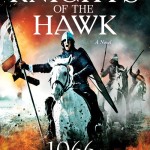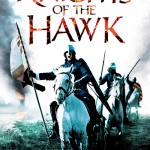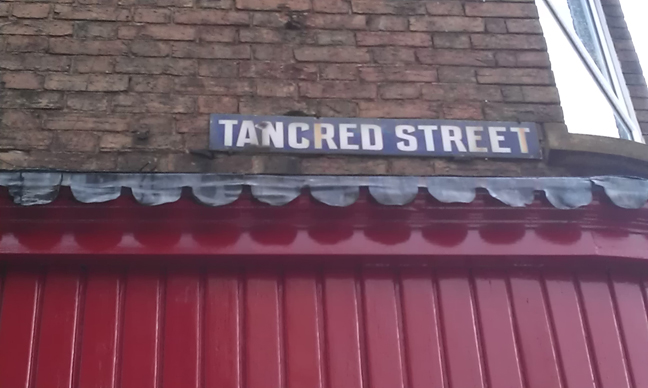“The sword-path is never a straight road, but rather ever-changing, encompassing many twists and turns. All a man can do is follow it and see where it leads.”
In a little less than a month’s time, Knights of the Hawk, the third instalment in my Conquest Series featuring the knight Tancred, will be released in the United States in hardcover.
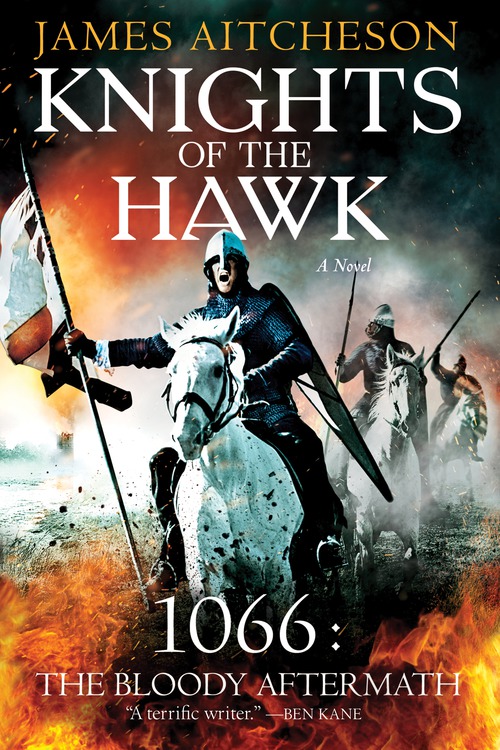
Knights of the Hawk • James Aitcheson
Sourcebooks Landmark • 416 pp. • Hardcover • $24.99
Like the previous two volumes in the series, the book will be published by the excellent team at Sourcebooks Landmark, with whom I’ve had the immense pleasure of working over the last three years, and will be available from all good bookstores and online retailers from August 4th.

The cathedral at Ely, built on the site of the Anglo-Saxon monastery which Hereward and his fellow rebels established as their base in the fight against the Normans.
The novel begins during the siege of the Isle of Ely, where the infamous English outlaw Hereward the Wake has gathered a band of rebels to make one final, last-ditch stand against the Normans.
As King William’s attempts to assault the rebels’ island stronghold end in disaster, however, the campaign begins to stall. With morale in camp failing, the king turns to Tancred to deliver the victory that will crush the rebels once and for all and bring England firmly within his grasp. But events are conspiring against Tancred, and soon he stands to lose everything he has fought so hard to gain.
“It is in those final hours, when the prospect of battle has become real and the time for hard spearwork is suddenly close at hand, that a man feels most alone, and when doubt and dread begin to creep into his thoughts. No matter how many foes he has laid low, or how long he has trodden the sword-path, he begins to question whether he is good enough, or whether, in fact, his time has come.”
Also, keep a look out for the U.S. paperback edition of The Splintered Kingdom, which will be published by Sourcebooks Landmark in November. I’ll be posting more information about that in the coming months.
The wait is over! Knights of the Hawk, the third novel in the Conquest series, is published today in the UK by Preface, both in hardback and also – for the more digitally inclined among you – as an e-book.

The cathedral at Ely, built on the site of the Anglo-Saxon monastery which Hereward and his fellow rebels used as their base in their struggles against the Normans in 1071.
Thus begins Tancred’s latest adventure, which sees him facing his greatest challenge yet as he ventures from the marshes of East Anglia to the wild, storm-tossed seas of the north in pursuit of love, of honour, and of vengeance.
Over the course of the next month I’ll be travelling the length and breadth of the country doing talks and book signings and panel events. It all kicks off on Tuesday 29 October when I’ll be launching Knights at the White Horse Bookshop in Marlborough. After that I’ll be travelling up to Doncaster to a signing at Waterstones in the Frenchgate Centre on Saturday 2 November, and then over the course of the next few weeks you’ll be able to find me in Salisbury, Bedford and Cambridge.
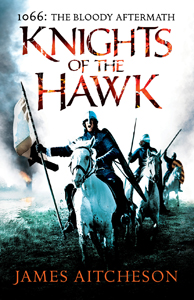
Knights of the Hawk • James Aitcheson • Preface • 448 pp. • Hardback • £16.99
And before you ask, Knights of the Hawk is not the end of the series. Tancred will ride again soon! I’m currently in the middle of researching my next project, which I’m very excited about. I’ll be revealing more details about that over the coming months.
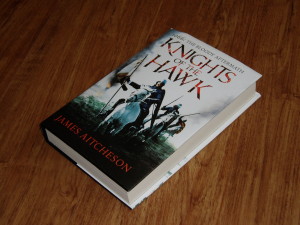
Knights of the Hawk • James Aitcheson • Preface • 448 pp. • Hardback • £16.99
Almost a year has passed since the end of The Splintered Kingdom, so that by the time that Knights begins, it’s already autumn, 1071. The battle for England has been long and brutal. Now only a desperate band of rebels, among them the feared outlaw Hereward the Wake, stands between King William and absolute conquest. Determined to root out those rebels from their island stronghold at Ely in the Fens, the king has gathered an army numbering in the thousands. Among them, as ever, is our hero Tancred, determined to restore his dwindling reputation. And it is to Tancred and his allies that the king, frustrated by the campaign’s various setbacks, turns to in search of a strategy to crush the rebellion.
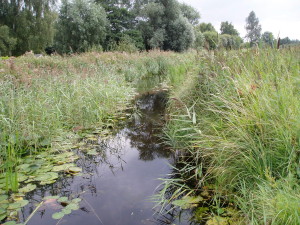
The Fens: the setting for Tancred’s latest adventure. (Wicken Fen National Nature Reserve)
If you can’t make it along to any of the venues listed, don’t worry! I’m adding new dates to the schedule all the time. You can also try putting in a request for an event with your local bookshop or library, who are always eager to have authors in.
By the way, there’s also good news for readers in Germany, where The Splintered Kingdom is due to be published in translation, under the title Die Ritter des Nordens, on 16th December – just in time for Weihnachten! I’ll be posting more details of that release closer to the time.
A piece by Colin Burrow in the latest edition of the London Review of Books (22 November 2012) asks, “Why does a name sound right? … Are there rules about how names are given to characters?”
I’m often asked at talks and readings how I go about choosing the names for my characters. This can be a bit trickier for historical novels than for modern fiction, and inevitably involves a fair amount of research. Whilst a lot of medieval names are still in use today in some form – especially French names imported by the Normans, like William, Stephen and Hugh – others, particularly Anglo-Saxon names like Ælfwold or Byrhtwald, are no longer in use. So to uncover interesting examples that I can use in my novels, I go back to the primary sources and gradually build up a database of Anglo-Saxon, Norman, Breton and Welsh names. Domesday Book, which was compiled in 1086, is an ideal resource for the Norman Conquest, as are the various contemporary chronicles.
But that’s only part of the story. It’s important for me to choose a name that fits the personality of the character I have in mind. I knew that for Tancred’s trusted brother-in-arms Wace, for example, I wanted a single-syllable name to reflect his blunt manner, and there were surprisingly few to choose from in my database. “Wace” had the advantage that it rhymed with “mace”: a bludgeoning weapon and a relatively unsubtle one at that, making use of brute strength to batter one’s opponent. All of those connotations fitted well with my idea of what I wanted the character to be like.
Obviously it’s not an exact science – there are of course many more words that rhyme with Wace, all of which might have suggested different aspects to his character, but that was the one that first sprang to mind, and so that association stuck with me. For very similar reasons I chose to call one of Tancred’s knights in The Splintered Kingdom Serlo largely because of its similarity to “surly”, which was how I originally imagined him, although that impression changed in the course of writing the rest of the novel.
Other names evolve over time. My narrator and hero was originally (in the very earliest drafts of the first chapter of the novel that eventually, several years later, became Sworn Sword) named Thurstan, partly in homage to the Norman protagonist of Barry Unsworth’s 2006 novel The Ruby in Her Navel, set in twelfth-century Sicily, which was one of the books that inspired me to start writing my own historical fiction. But very quickly I realised that Thurstan didn’t feel quite right. I wanted to define my narrator as distinct from Unsworth’s, and give him an independent identity, which meant I had to give him a new name.
So I went back to my list of French names, and came up with Tancred. Somehow, it sounded stronger, bolder and grittier, and just, well, … right. And although it’s fairly obscure now, it was a noble name at the time, being also the name of one of the leaders of the First Crusade, Tancred, Prince of Galilee, and of a King of Sicily in the following century. And so I began to build a picture of my Tancred as someone with ambition and aspiration to great things.
There were problems with that choice later on, especially when I decided he was to be of Breton extraction rather than a Norman, which meant that I had to explain why he had a French and not a Breton name. But the explanation that I came up with in turn helped to shape his character and his background, and add new dimensions to him that I hadn’t considered before. Usually, as in the case of Wace, it’s the other way around, but occasionally the choice of name itself will give me inspiration as to the personality of a character and the direction in which his story might unfold.
I should note that I generally prefer to use the contemporary eleventh-century rather than modern forms of personal names, so as to make them seem less familiar and also, in the case of the Norman characters, more foreign and less English. So William becomes Guillaume, Hugh becomes Hugues, Edgar becomes Eadgar, Edith becomes Eadgyth and so on. In a similar way, as far as possible I use the Old English versions of place-names, to add distance and remind readers that the England of c.1066 was a very different country to the England of today.
One last point: once a character’s name is established, I find it very difficult to change it unless there’s very good reason to do so. Why this is, I’m not really sure, although probably it’s precisely because the name is usually so intrinsically tied up with his or her personality that to alter it would simply feel wrong, in some way like a betrayal of that character. I just can’t bring myself to do it.
I was recently sent the above photo by fellow historical novelist Ben Kane, author of the bestselling Hannibal: Enemy of Rome, who happened upon Tancred Street while visiting Taunton last month.
Since my Tancred is a fictional character and not based on any particular historical figure, unfortunately I can’t claim that it was named after him. Still, it started me wondering whether there might be any other streets or places (either in Britain or abroad) that share the names of characters from Sworn Sword.
Is there a Wace Crescent, for example, or a Malet Street? Somewhere in the world does there exist a Eudo Drive, a Radulf Walk, an Aubert Avenue, or even an Ælfwold Terrace?
Let me know if you come across any good examples, either by getting in touch with me via the Contact page or by posting pictures on Twitter, using the #SwornSword hashtag and/or tweeting me at @JamesAitcheson. I’ll post the best photos here on the website for all to see.
Featured podcast
For more podcasts, visit James's channel on Soundcloud.

